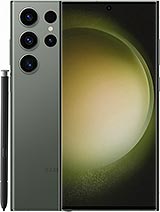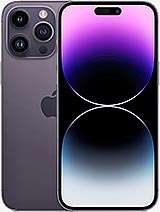Introduction
Vivo's flagship crop is the strangest bunch we've ever seen - each new generation is different than the previous one, with shuffled features, different types of cameras, and changed screen resolutions. The only certain things we always expect to see are camera tech upgrades and chipset improvements. And that describes the new vivo X90 Pro.
The latest X90 top-tier lineup once again consists of three smartphones - the bleeding-edge X90 Pro+, the regular X90 Pro and the toned-down X90. Today, we'll be exploring the vivo X90 Pro - the first smartphone we meet powered by the new Dimensity 9200 chipset and among the few to offer a 1-inch camera sensor.

The innovations begin with the design - the vivo X90 Pro now has an even larger camera housing with a perfectly round shape. The back panel is covered with black vegan leather, and there is no other color option, at least not on the international markets anyway.
Underneath that screen, the X90 Pro hides MediaTek's flagship SoC - the Dimensity 9200 with modern CPU cores, X3 included, an 11-core GPU, and more than enough RAM and storage. There is also a massive heatsink, probably one of the largest put in a phone, and it should help offer greater sustained performance.
The charging capabilities of this new vivo X90 Pro are thoroughly impressive, too - it supports 120W fast wired charging (50% in 8 mins per official specs) and 50W fast wired charging.
The X series has always been about cameras and the vivo X90 Pro has an impressive kit on its back. There is a 50MP primary camera with 1" sensor, the same Sony IMX 979 used on the Xiaomi 12S Ultra. There is also a 50MP 2x telephoto, followed by a 12MP ultrawide camera with autofocus capabilities. The whole imaging system relies on the latest version of vivo's X2 image processing chip, and Zeiss lenses.

This year, none of the X90 models have gimbal stabilization, a feature that several vivo phones offered across their primary, telephoto, or ultrawide cameras in the past. Instead, the primary and the portrait cameras rely on traditional OIS systems.
We talked about the shuffled features, and the display has been one of these features we just can't predict. This year, the vivo X90 Pro uses a 6.78-inch AMOLED with a 1260p resolution, 10-bit color depth, 120Hz refresh rate, and HDR10+ certification. For comparison, the X80 Pro had a 1440p display, while the X70 Pro relied on a smaller 1080p OLED.
The vivo X90 Pro uses Android 13 with Funtouch 13 UI, while the Chinese version runs on Origin OS 3.
vivo X90 Pro specs at a glance:
- Body: 164.1x74.5x9.3mm, 215g; glass front, vegan leather back, aluminum frame; IP68 dust/water resistant (up to 1.5m for 30 mins).
- Display: 6.78" AMOLED, 1B colors, 120Hz, HDR10+, 1300 nits (peak), 1260x2800px resolution, 20:9 aspect ratio, 453ppi.
- Chipset: Mediatek Dimensity 9200 (4 nm): Octa-core (1x3.05 GHz Cortex-X3 & 3x2.85 GHz Cortex-A715 & 4x1.80 GHz Cortex-A510); Arm Immortalis-G715.
- Memory: 256GB 8GB RAM, 256GB 12GB RAM, 512GB 12GB RAM; UFS 4.0.
- OS/Software: Android 13, Funtouch 13 (Global), Origin OS 3 (China).
- Rear camera: Wide (main): 50.3 MP, f/1.8, 23mm, 1.0"-type, 1.6µm, Dual Pixel PDAF, Laser AF, OIS; Telephoto: 50 MP, f/1.6, 50mm, 1/2.4", 0.7µm, AF, 2x optical zoom, OIS; Ultra wide angle: 12 MP, f/2.0, 108˚, AF.
- Front camera: 32 MP, f/2.5, 24mm (wide), 1/2.8", 0.8µm.
- Video capture: Rear camera: 8K, 4K@30/60fps, 1080p@30/60fps, gyro-EIS; Front camera: 4K@30fps, 1080p@30fps.
- Battery: 4870mAh; 120W wired, 50% in 8 min (advertised), 50W wireless, Reverse wired.
- Misc: Fingerprint reader (under display, optical); NFC; Infrared port; stereo speakers.
There is little missing on the vivo X90 Pro in terms of modern day features. The phone is IP68-rated, made for the global markets, it uses flagship screen, cameras, chipset, charging solutions. Maybe a bit longer telephoto lens, say 2.5x or 3x would have been better, but vivo is marketing this camera as a portrait one, so 50mm lens is sort of par for the course.
And now, here is the vivo X90 Pro unboxed.
Unboxing the vivo X90 Pro
The vivo X90 Pro arrives in a large black box, something we've grown to like and expect from this maker. Inside, you will find the X90 Pro, accompanied by a large 120W charger and a 6A-rated USB-C-to-C cable.

That's not all, of course. The box also contains a transparent silicone case, while the phone comes with a thin protective film that was applied at the end of the manufacturing process. It's not of the worst quality we've seen, though far from the best either (meaning it is still a smudge magnet).
Design, build quality, handling
This year vivo has adopted circular camera housing, which combined with the vegan leather back gives the X90 Pro a recognizable design and the premium feel that's usual for the flagship class.
 Vivo X80 Pro and vivo X90 Pro
Vivo X80 Pro and vivo X90 Pro
The vivo X90 Pro has slightly curved front and rear panels, and a thin metal frame with a barely noticeable curvature, too. The phone is IP68-rated for dust and water resistance, a protection that has been atypical for Chinese phones until recently.
There is no information on the screen glass, though it is probably a Schott Xensation Up sheet, just like on the vivo X70 and X80 series.

The rear panel, on the other hand, is made of plastic and covered with vegan leather. That's a departure from the glass and ceramic backs we've seen on the older models, but we do appreciate the change as it makes for an outstanding grip, something that's crucial for a cameraphone of such a caliber.
The aluminum frame is quite thin around the longer sides and nearly flat across the short ones. The overall weight is not well balanced because of the huge camera, and that's the reason why the X90 Pro cannot stand on its own (not that it needed to do so).

The vivo X90 Pro is available only with a vegan leather back panel, and the global model has only one color option - the Legendary Black we have here. There is also a Red version in existence, but it's exclusive to China.
The vivo X90 Pro reminds us of the Xiaomi 12S Ultra because of its signature camera housing, plus it uses the same 1" camera sensor for the main camera. The Zeiss logo on the vivo is an easy tell, though, as Xiaomi has partnered with Leica for its most current flagships.
 Xiaomi 12S Ultra next to the vivo X90 Pro
Xiaomi 12S Ultra next to the vivo X90 Pro
Let's take a closer look at the vivo X90 Pro now.
The 6.78-inch display occupies most of the front, and a slightly curved glass panel covers it. This year vivo has used 1260p OLED panel instead of 1440p one, though it still supports the most important quirks like 120Hz refresh rate, HDR10+ certification, and 10-bit color depth.

There is a small perforation centered at the top - that's where you can spot the 32MP selfie camera.

There are two things you won't see right away at the front - the earpiece/speaker outlet and the fingerprint scanner.
The vivo X90 Pro features two speakers, and one of them is front-facing, placed above the display. There is no visible grille, just a barely noticeable outlet. The second one sits at the bottom behind a rather large, dotted grille.

The X90 Pro has an optical fingerprint scanner behind its display, and it works like a charm - fast and reliable.

There isn't much to see across the sides - the IR sensor and one of the mics are at the top.

We've already discussed the second speaker at the bottom, but it's not alone. Here you can also see the SIM slot, the primary microphone and the USB-C port.

The left side of the vivo X90 Pro has no controls, while the right one accommodates the volume and power/lock keys.

The back of the X90 Pro is quite busy. The round camera housing is huge and thick, and it envelops the 50MP primary, the 50MP telephoto, and the 12MP ultrawide cameras, as well as the laser emitter and receiver for the autofocus assistance. There is a third microphone in here.
Outside the camera bump, you can see the dual-LED flash, the Zeiss logo and a bunch of marketing inscriptions.

There is a metal band below the camera that goes from one side of the frame to the other and looks a lot like an important baring piece of the whole chassis (it may as well be). It is as glossy as the frame and painted in the same color.
The vivo X90 Pro measures 164.1 x 74.5 x 9.3 mm and weighs 215g, in line with most smartphones of its size, especially cameraphones. It doesn't wobble when used without a case because its camera housing is huge.

The X90 Pro offers a good grip - it has a grippy back that is fingerprint and smudge resistant. But the grip is compromised by the thin, curved and glossy frame, and that's probably the only imperfection we found when using the phone for a week. If you want a more secure grip, you can use the bundled case.
6.78-inch OLED of 1260p resolution
The vivo X90 Pro features a 6.78-inch OLED screen with 10-bit color depth, HDR10+ certification, and 1260p resolution. The panel supports a 120Hz refresh rate and high-frequency 2,160Hz PWM dimming for people who are sensitive to PWM pulsations on AMOLED screens.
BOE is the display manufacturer, and the panel uses its proprietary Blue Diamond Pixel arrangement, which allegedly increases the OLED lifespan by 30% and also improves the brightness and color properties.

The display is protected by a slightly curved glass, but its maker is not revealed. The vivo X80 Pro and X70 Pro used Schott Xensation Up glass, and there is a big chance the vivo X90 Pro uses the same type of protection.
Let's talk about the screen specs. As we said, it's a 6.78-inch in diagonal and offers a 2,800 x 1,260 pixels resolution or 453 ppi density. There is support for 10-bit color depth, meaning the screen can show over a billion colors. Unlike the LTPO3 panel on the vivo X80 Pro that offered truly dynamic refresh rate, this one has fixed three fixed steps - 60Hz, 90Hz, and 120Hz.
Vivo hasn't shared any brightness numbers outside the 1,300 nits peak brightness. We've completed our display test and we captured 517nits of maximum manual and 934nits of maximum automatic brightness.
The sunlight boost seems to be available no matter if you are using Auto Brightness or not, but if Auto Brightness is not on, sometimes it just dramatically lowers the contrast instead of raising the brightness beyond 520 nits. And, another thing, we did measure 540nits of brightness when testing the sRGB color accuracy, so the maximum manual brightness also depends on the chosen color mode.
The minimum brightness at point white is 1.9 nit.
| Display test | 100% brightness | ||
| Black, |
White, |
||
| 0 | 517 | ∞ | |
| 0 | 934 | ∞ | |
| 0 | 488 | ∞ | |
| 0 | 1014 | ∞ | |
| 0 | 457 | ∞ | |
| 0 | 993 | ∞ | |
| 0 | 512 | ∞ | |
| 0 | 1065 | ∞ | |
| 0 | 517 | ∞ | |
| 0 | 831 | ∞ | |
| 0 | 1274 | ∞ | |
| 0 | 568 | ∞ | |
| 0 | 946 | ∞ | |
| 0 | 406 | ∞ | |
| 0 | 644 | ∞ | |
| 0 | 828 | ∞ | |
| 0 | 1760 | ∞ | |
Color accuracy
The vivo X90 Pro and its Funtouch launcher offer four color modes - Standard (default), Pro, Bright, and Zeiss Natural Color. In all but the Zeiss modes you can also tweak the color temperature.
All modes but the Pro correspond to the DCI-P3 color gamut.
The Standard (default) color mode offers very good color accuracy except for the slightly bluish white and gray hues. A similar thing can be said for the Bright mode, too, though some of the base color here also exhibit a slight saturation boost.
The Zeiss mode offers excellent accuracy to DCI-P3 targets with accurate white and gray colors. The Pro mode offers superb accuracy to sRGB targets.
Refresh rate
The vivo X90 Pro display supports a 120Hz refresh rate, but it's not as dynamic as on the vivo X80 Pro's. The X90 Pro screen has three fixed steps - 60Hz, 90Hz, and 120Hz.

The vivo X90 Pro offers three refresh rate modes, similar to what we've seen on most of the modern phones - 60Hz, 120Hz, and Smart Switch.
The 60Hz is self-explanatory - the phone always uses 60Hz refresh rate and all apps are capped at 60fps.
The Smart Switch and 120Hz modes work in a similar fashion - they use 120Hz across the user interface and most apps, and switch to 60Hz for static picture, video playback (but not video UI) and incompatible apps like Google Maps and Camera app.
The Smart Switch is a bit more restrictive - it analyzes the app, and it decides if it's worth using 120Hz or not. We found that web browsers, video streaming apps like Netflix, office apps, among others are limited to 60Hz. In fact, half of the apps we tried were limited to 60Hz.
The Smart Switch and 120Hz modes allow for HFR gaming (and benchmarking), if supported. There is also a Frame Rate Interpolation feature that increases 90fps games to 120fps, though the game has to be compatible, and you need to enable the feature from within the Ultra Game Mode manually.
HDR and streaming
The vivo X90 Pro has an HDR10+ certified display, and it comes with Widevine L1 DRM support. The phone is recognized by all popular apps as HDR10-capable, and we were able to stream HDR content in high resolution everywhere.
Display enhancements
There is one display enhancement option for the vivo X90 Pro screen, and it's called Visual Enhancement. It optimizes the colors and contrast in compatible video streaming apps for a "more vivid picture". Once enabled in settings, you can select the apps where you want this to work - such as YouTube and Netflix.
The Visual Enhancement feature increases the power consumption, while its effect is barely noticeable (also unnecessary), and, in our opinion, you should keep it off.
Battery life
The vivo X90 Pro is powered by a 4,870mAh battery, up from 4,700mAh on the vivo X80 Pro and 4,450mAh on the X70 Pro. The battery has been split into two separate cells so it can support the incredibly fast 120W fast charging.
We've completed our battery life test, and the vivo X90 Pro scored a 96h endurance rating. It did absolutely great on the onscreen tests - 16 hours and 27 minutes of web browsing and 18 hours of continued video playback.

Our battery tests were automated thanks to SmartViser, using its viSerDevice app. The endurance rating denotes how long the battery charge will last you if you use the device for an hour of telephony, web browsing, and video playback daily. More details can be found here.
The sub-100h endurance rating comes from the average standby performance (237h), which could be attributed either to the chipset and its modem, or the software (lack of) optimizations, or both.
Video test carried out in 60Hz refresh rate mode. Web browsing test is done at the display's highest refresh rate whenever possible. Refer to the respective reviews for specifics. To adjust the endurance rating formula to match your own usage patterns, check out our all-time battery test results chart, where you can also find all phones we've tested.
Charging speed
The 4,870mAh battery inside the vivo X90 Pro has two independent cells, and that's how the 120W fast wired charging was made available. The phone ships with a 120W brick and a 6A-rated USB-C cable.

Oddly, the fast-charging option was disabled by default from within the battery settings, limiting the charging power to 20W-30W or so.
Vivo promises 50% of charge in 8 minutes, and we can confirm that - the X90 Pro recharged to 30% in 5 minutes and to 50% sharp in 8 minutes!
A full charge took 24 minutes - about the same as the Xiaomi 12T and 12T Pro with their 5,000mAh batteries and 120W fast chargers.
The vivo X90 Pro also supports 50W fast wireless charging, and even reverse wireless charging (needs to be turned on/off from the battery menu). Reverse wired charging is also supported, too, and you already have a USB-C-to-C cable inside the box, which means you don't need any adapters.
Speakers - loudness and audio quality
The viv0 X90 Pro has stereo speakers - there is one at the bottom of the phone, while the other one is above the screen and also doubles as an earpiece.
The top speaker is a bit quieter than the bottom one, but it is front-facing, and that makes up for its inferiority. With that in mind, the setup offers excellent audio balance no matter how you are holding the phone.
The stereo speakers on the vivo X90 Pro scored a Very Good mark on our loudness test, and they indeed sound loud when playing music and when ringing. The audio quality is also very good - there is a good bass, likable mid-tones and vocals, and the high range is also well-presented.
We've experienced phones with a bit richer and deeper sound from their speakers (like the Galaxy S23 series), and that's why we can't rate the X90 Pro audio quality as excellent. But it is, indeed, Very Good.
Use the Playback controls to listen to the phone sample recordings (best use headphones). We measure the average loudness of the speakers in LUFS. A lower absolute value means a louder sound. A look at the frequency response chart will tell you how far off the ideal "0db" flat line is the reproduction of the bass, treble, and mid frequencies. You can add more phones to compare how they differ. The scores and ratings are not comparable with our older loudspeaker test. Learn more about how we test here.
Funtouch 13 on top of Android 13
The vivo X90 Pro boots Android 13 with a proprietary layer on top, which varies depending on where you are in the world. The China-bound version is called Origin OS 3, while we get the 'international' Funtouch OS - v13, to be specific.

The vivo X80 Pro used Funtouch v12, and this new iteration isn't at all different in look and feel. And it's a pretty customized and customizable experience.






Lockscreen • Homescreen • Homescreen • Folder view • Settings menu
One of the useful proprietary features can be found in the recent apps menu. You can choose between the standard carousel formation and a horizontal tiles layout - sort of like MIUI, only scrollable horizontally. The setting is available right then and there - you don't need to look for it in the menus.




Recent apps • Recent apps • Pop-up • Spilt screen
The notification shade is pretty familiar, and Funtouch is staying away from Google's large bubble-style quick toggles - it's simple circular buttons here. The default accent color here is blue and can be controlled via the Android 13 AOSP color palette interface. A powerful theming engine is still present.
The app drawer has an expandable recommended apps category on the top (most commonly used ones), whereas using the vertical scroller on the right would highlight the apps beginning with the selected letter.




Notification shade • Quick toggles • App drawer • Widgets next to the app drawer
The rest of the UI has plenty of non-stock bits. In the Dynamic effects sub-menu, vivo has grouped a bunch of customization options for the home screen, lock screen and animation effects. There are even various charging and facial recognition animations.
The always-on display settings are in a different sub-menu, but the phone still gives you plenty of options to tinker with - a wide selection of animations, clock styles, colors, backgrounds.
The Sound menu holds a few pleasant surprises. Just like Samsung and its OneUI, Funtouch takes care of people with hearing problems, and you can calibrate the sound to be heard by elderly people or those with impaired hearing. Additionally, notifications and calls get separate volume sliders. The vibration intensity can be adjusted for calls and notifications independently. No system-wide equalizer is available for the loudspeaker, though, which could be either a negative or a positive, depending on how you look at it. An Audio Super Resolution toggle is thrown into the mix.
The Smart motion menu holds a handful of familiar screen-on and screen-off gestures along with some new additions. One of those requires you to wave in front of the screen during an incoming call to answer hands-free - useful if you're cooking, for example.
Holding the volume down key can be used to launch an app or do a certain task, although the list is limited to the camera app, turning on/off the torch, start recording audio, open Facebook, or open any custom app. The so-called Quick action feature doesn't work when playing music for obvious reasons. Why isn't there a double-press option for Quick action, though?





Shortcuts and accessibility • Quick action • S-capture • Screen-split • Easy Touch
A dedicated Ultra Game Mode is available, and it has it all. Most of the features are about mitigating disturbance during gameplay or preventing certain apps from displaying notifications. One of the most intriguing features that have been around on vivo phones for a while is the ability to turn off the screen and keep the game running in the background. Especially useful for turn-based games or those requiring some sort of "farming" or "grinding".
Having all of these customizable gestures, actions and additional features around is cool, but we can't help but wish that Funtouch would have done a better job of organizing them - and that's been a recurring complaint. As things currently stand, it is hard to find certain options, even when you know for a fact that they exist and consequently, discovering new things is even harder.
The Funtouch launcher also offers its own gallery, audio and video players, system manager, and Smart Remote (for the IR blaster). There is also a dedicated Themes app.






Albums • Video • Music • Smart Remote • Themes
Performance and benchmarks
The vivo X90 Pro is the first smartphone with top-of-the-line Dimensity 9200 chipset to visit our office. It is fabbed on the 2nd generation TSMC 4nm process (N4P) and brings plenty of improvements.

The Dimensity 9200 chipset features an octa-core processor with a prime Cortex-X3 core @ 3.05Hz, 3x Cortex-A715 cores @ 2.85GHz and 4x Cortex-A510 @ 1.85GHz. For a comparison, the Snapdragon 8 Gen 2 had 4x Cortex-A715 and 3x Cortex-A510 in addition to its 1x Cortex-X3.
The SoC utilizes the ARM Immortalis-G715 MC11 GPU with hardware-based ray tracing engine. The new flagship graphics unit brings Variable Rate Shading (VRS), double machine learning performance compared to the predecessor and ARM Fixed Rate Compression (AFRC) for reduced bandwidth usage.
MediaTek is also bringing a sixth-generation AI Processing Unit - the APU 690, which brings a 35% improvement over its predecessor in the ETHZ5.0 benchmark app. The chipset also enables support for speedy LPDDR5X RAM with support for up to 8,533Mbps memory and UFS 4.0 storage for blazing-fast data transmission and direct storage access to the CPU cores.
The Dimensity 9200 chip inside the vivo X90 Pro contains a new custom ISP - vivo V2. This third-gen chip (following the V1 and V1+) comes with unparalleled computing power capacity, power density, and data density, vivo claims. There is also a dedicated SRAM (Static RAM) cache unit that can reduce maximum power consumption by over 99% and the power efficiency ratio to 200%, compared to classic DDRs with external memory design.
The imaging chip of vivo was always about quick capture of photos in low lighting, and the ultra-clear image quality engine now has a special algorithm called Ultra Zoom EIS, combining IMU, OIS, and EIS for better zooming without losing the quality of the image.
The vivo V2 also supports "zero-latency" snapping which, in theory, should work through motion detection to take a picture of the moment you hit the shutter button. There is also RawEnhance 2.0, which builds upon the first version of the image-stacking feature that produces HQ photos in low light.
The vivo X90 Pro we have for this review packs 12GB of LPDDR5X RAM and 256GB UFS 4.0 storage. A 512GB model is also available for purchase in some markets.
And now, let's run some benchmarks.

Starting off with Geekbench 5 CPU test - the X90 Pro posted an excellent multi-core score, a notable improvement over the Dimensity 9000 and the Snapdragon 8 Gen 1. The Snapdragon 8 Gen 2 has five high-performance CPU cores instead of four (counting the X3), and that's why it is currently the best-scoring processor.
GeekBench 5 (multi-core)
Higher is better
- Samsung Galaxy S23 Ultra
4927 - OnePlus 11
4899 - Xiaomi 12S Ultra
4300 - vivo X90 Pro
4273 - Tecno Phantom X2 Pro
3984 - Huawei Mate 50 Pro
3839 - ROG Phone 6D
3531 - vivo X80 Pro
3505 - vivo X70 Pro+
3469 - vivo X70 Pro
2956
The Snapdragon 8 Gen 2 also relies on the same Cortex-X3 prime core, but it has a higher clock than the Dimensity 9200's and hence the higher score in the single-core test, too.
GeekBench 5 (single-core)
Higher is better
- Samsung Galaxy S23 Ultra
1537 - vivo X90 Pro
1387 - Xiaomi 12S Ultra
1324 - Huawei Mate 50 Pro
1277 - Tecno Phantom X2 Pro
1248 - vivo X80 Pro
1184 - OnePlus 11
1150 - vivo X70 Pro+
1106 - ROG Phone 6D
1015 - vivo X70 Pro
875
The ARM Immortalis-G715 MC11 GPU offers outstanding performance across the board, and it is bested only by the Snapdragon 8 Gen 2 Adreno 740 GPU, though not by much. It is a significant improvement over the 2022's mobile GPUs.
GFX Aztek ES 3.1 High (offscreen 1440p)
Higher is better
- OnePlus 11
61 - Samsung Galaxy S23 Ultra
59 - vivo X90 Pro
55 - Xiaomi 12S Ultra
46 - Huawei Mate 50 Pro
45 - ROG Phone 6D
43 - Tecno Phantom X2 Pro
42 - vivo X80 Pro
41 - vivo X70 Pro+
27 - vivo X70 Pro
21
GFX Aztek Vulkan High (offscreen 1440p)
Higher is better
- Samsung Galaxy S23 Ultra
69 - OnePlus 11
68 - vivo X90 Pro
54 - Xiaomi 12S Ultra
51 - Huawei Mate 50 Pro
51 - ROG Phone 6D
46 - Tecno Phantom X2 Pro
44 - vivo X80 Pro
37 - vivo X70 Pro+
29 - vivo X70 Pro
20
GFX Car Chase ES 3.1 (onscreen)
Higher is better
- Samsung Galaxy S23 Ultra (1080p)
110 - vivo X90 Pro (1080p)
93 - vivo X90 Pro
74 - ROG Phone 6D
71 - Tecno Phantom X2 Pro
71 - Huawei Mate 50 Pro
68 - Samsung Galaxy S23 Ultra
67 - OnePlus 11
57 - Xiaomi 12S Ultra
51 - vivo X80 Pro
44 - vivo X70 Pro
40 - vivo X70 Pro+
33
GFX Manhattan ES 3.1 (onscreen)
Higher is better
- ROG Phone 6D
122 - vivo X90 Pro (1080p)
120 - Samsung Galaxy S23 Ultra (1080p)
120 - vivo X90 Pro
118 - Tecno Phantom X2 Pro
115 - Huawei Mate 50 Pro
113 - Samsung Galaxy S23 Ultra
112 - Xiaomi 12S Ultra
91 - vivo X80 Pro
82 - vivo X70 Pro
77 - OnePlus 11
60 - vivo X70 Pro+
58
3DMark Wild Life Extreme (offscreen 1440p)
Higher is better
- Samsung Galaxy S23 Ultra
3790 - vivo X90 Pro
3698 - OnePlus 11
3594 - Huawei Mate 50 Pro
2753 - ROG Phone 6D
2555 - Tecno Phantom X2 Pro
2393
Moving on to the compound AnTuTu 9 test we can see that the Dimensity 9200 is holding its own against the Snapdragon 8 Gen 2 phones with an impressive score.
AnTuTu 9
Higher is better
- Samsung Galaxy S23 Ultra
1241531 - vivo X90 Pro
1228735 - OnePlus 11
1140661 - Xiaomi 12S Ultra
1039412 - vivo X80 Pro
1002570 - Huawei Mate 50 Pro
979921 - Tecno Phantom X2 Pro
961576 - ROG Phone 6D
948594 - vivo X70 Pro+
837833 - vivo X70 Pro
694499
In summary, the Dimensity 9200 is a true flagship chipset and a worthy rival to the Snapdragon 8 Gen 2. Our benchmarks show it's roughly 30% faster in the CPU benchmarks compared to the outgoing Dimensity 9000+ and 20% faster in the GPU department. It is also about 20% more powerful than the Snapdragon 8 Gen 1 chip in CPU and GPU tests.
The vivo X90 Pro features a massive heatsink-based cooling system, one of the largest passive solutions around. Naturally, we ran some stability tests, and the results are okay, though far from ideal.
The Dimensity 9200 coupled with vivo's cooling system provides excellent CPU stability - about 75%. The phone got a bit warm after an hour of running at peak load, but far from hot.
Then we ran the 3D Mark stress test - 20 loops of 1 minute GPU-intensive test. The vivo X90 Pro ran rather well for 10 minutes, but then dropped its performance down to 62%. Which is still a good score, considering we've seen flagships that do 40% or less. That is the good news.
The bad news is that after 20 mins of GPU stress test, the vivo X90 Pro became unbelievably hot - enough to burn your hands. The frame was untouchable across the entire phone, the screen was crazy hot, while the back only remained warm.
We tested the vivo X90 Pro across various games, and it never became as hot as on the 3D Mark stress test, which is great.
Next generation Zeiss camera
Vivo has always been unpredictable when it comes to its camera systems. Each new generation offers a different number of cameras, different sensors, different lenses, different stabilization methods, and different optical zoom. The only constant is the partnership between vivo and Zeiss - the collaboration once again means the lenses have what the German optics specialists call T* coating for combating ghosting.
The vivo X90 Pro has three cameras on its back - a 50MP primary, a 50MP telephoto (portrait), and a 12MP ultrawide - all featuring autofocus and 4K video capturing.

The X90 Pro is the first vivo phone to use 1" sensor, the same Sony IMX 989 we saw on the Xiaomi 12S Ultra, and it's the highlight of this new system. We have already explained what the 1" means in our 12S Ultra review - it's not the actual sensor size, but a legacy concept that refers to the diameter of the video camera tube needed to project an image that would cover the size of the sensor. You can learn more about that here.
What you need to know about that 50.3MP Sony IMX 989 sensor is that it's the largest sensor available on a smartphone with 1.6µm individual pixels and Quad-Bayer RGB color filter. The sensor sits behind a 23mm f/1.75 stabilized (OIS) lens with high-transmittance glass (1 glass + 7 plastic pieces and Zeiss T* coating.
The primary camera supports laser-assisted autofocus and up to 8K24 video capturing.
The telephoto camera relies on a 50MP Sony IMX758 1/2.4" sensor with a Quad-Bayer color filter and a 50mm f/1.6 stabilized (OIS) lens. There is autofocus, of course, and 8K24 video recording is once again available.
The ultrawide camera uses a 12MP Sony IMX663 1/2.93" sensor with 1.22µm pixels, and it supports dual-pixel autofocus. The lens for this camera is 16mm f/2.0. The video capabilities here max out at 4K60.
Finally, the selfie camera packs a 32MP Samsung S5KGD2 sensor with 0.8µm pixels and a Tetracell color filter. The sensor sits behind a 24mm f/2.45 lens, the focus is fixed. This camera supports video recording up to 1080p60fps.
Camera app
The camera app is quite familiar as it is similar to the one presented on the X80 series. There's a straightforward zoom selector which gives you direct access to each of the four cameras. Accessing the Super Macro mode is done from the flower icon next to the hamburger menu, but it has an auto-on option too that kicks in when you get very close to a subject.

The main modes are arranged in a carousel formation, and you can switch between them by swiping or tapping on one of the visible modes. The More tab lists the rest of the modes, and from there, you can also customize the modes you have available in the viewfinder.
The Pro mode gives you all the freedom to adjust the autofocus, white balance, shutter speed, ISO and exposure. You can do so on all four cameras too. There's helpful information explaining all of the options above in case you are just getting into photography. Shooting in RAW is also an option. A bracketing mode is available - that one we don't see often, but focus peaking or zebras for overexposure are missing.
The Zeiss Natural color mode is present here and it should make for realistic colors, in contrast of the more saturated default look vivo's processing is offering (called vivo Vivid).
There is also a Zeiss miniature mode, which blurs everything outside the center of the photo and, given the right scene, will make for a miniature-like look you get from tilt-shift camera lenses.
Finally, the Portrait mode also includes Zeiss modes, Zeiss lens simulations to be specific. They are found in the Styles section and aim to reproduce the characteristics of specific lens ranges by the German optics specialists. They're most noticeable in the way out-of-focus specular highlights are rendered, but also in the smoothness of the bokeh.
Night Mode is present, and it supports Auto Tripod Night Mode, Panorama Night Mode, Super Moon and Astro versions. There are also different Long Exposure presets.
Daylight photo quality
Naturally, the main camera saves 12.5MP photos by default, and unless you've specifically turned on the Zeiss color mode, those are shot the way vivo intended them to look (also called vivo vivid color). We also left the HDR option on Auto, but it's rarely triggered, if at all.
The photos are incredibly detailed, with balanced sharpness and a rather natural look. There is no noise across the samples, and no visible traces of its removal, too. All photos exhibit outstanding dynamic range, though it sometimes comes at the expense of a bit lowered contrast.
The colors are punchy and lively, a bit over-saturated than what they looked in reality, but likable anyway.
Overall, the photos we took with the main camera are some of the best you can get from a smartphone these days, similar to what we experienced with the Xiaomi 12S Ultra and its primary cam.
Now, we've talked about how the Zeiss mode was intended to capture accurate colors, and it does exactly that - renders true-to-life colors with excellent white balance and spot-on saturation.
You can shoot in high-res mode, and the 50MP photos are quite impressive. Their properties are as great as the binned output, and while the resolved detail is not stunning, it is a lot more than what we've seen other phones offer with their high-res mode. In fact, it is almost on par with the regular photos from the telephoto camera, but almost.
And speaking of the telephoto camera, let's look at the same scenes but taken at 2x optical zoom. All samples offer enough detail, though not as excellent as on the main camera. This clearly demonstrates the superiority of the 50MP 1" sensor over the 50MP 1/2.4" one. There are also barely noticeable exaggerated textures due to oversharpening of high-frequency details such as grass or foliage.
Everything else is great - dynamic range, noise reduction, the contrast is likable, and the colors are a bit punchy, but quite good, too.
Of course, if color accuracy is what you are after and not the Vivid look, then the Zeiss mode will do the job. All Zeiss samples offer realistic, natural colors, which are more true-to-life.
And here are a bunch of 50MP samples taken with the telephoto camera. Their detail is average, and some noise is present, but they are still quite good and sometimes may help you get a more detailed 12MP image than if you were using the regular photo mode.
Moving on to the 12MP camera. The resolved detail is satisfying, the sharpness is alright, and the noise is low. The corners are proficiently straightened.
The dynamic range and the contrast are both above average. The colors in these shots are as vivid as on the other cameras.
The Zeiss mode seems to be preferable for the ultrawide camera as not only it offered realistic colors, but it improves the dynamic range on most occasions and makes for overall better-looking shots.
The ultrawide camera supports autofocus, and hence it can capture macro-like photos from as close as 4cm away. There is an auto-macro mode, which we did not prefer as it crops and upscales the ultrawide photo to match the field of view of the primary camera.
The closeup photos we took with the ultrawide camera are superb - the center is always detailed, sharp and colorful, with excellent contrast and good dynamic. There is no noticeable noise. The bokeh is impressive, too, and makes for easily lovable closeups.
Back to the 2x telephoto camera, also referred to as the portrait camera. There is a dedicated Portrait mode, which works on both the main and the zoom shooters, but it was intended to be used with the 2x cam. There are various effects, including Zeiss developed ones, and you can tweak the blur intensity by changing the simulated aperture.
The 2x portraits are impressive - the subject is well-exposed, detailed and sharp, free of noise, and with likable color saturation. The blurred background is always great, and we liked most of the effects vivo and Zeiss offer.
Finally, the subject separation is simply outstanding, but that's because the portrait camera has an already great starting point with the bokeh thanks to the wide f/1.6 aperture.
The different Zeiss effects do come in handy if you want to spice your portraits a little bit.
The portraits we took with the main camera are equally impressive, with excellent subjects, backgrounds, and separation.
The 32MP selfie camera uses a Quad-Bayer sensor, but it still saves 32MP pictures instead of 8MP. This means their detail is average, but everything else looks good - contrast, dynamic range, colors. The subject rendition is good and the noise is rather low.
We would still prefer to get the 8MP binned photos instead of these, at least by default.
Low-light photo quality
The low-light photos taken with the main camera are exemplary - the resolved detail is excellent, the exposure is great, the noise reduction deserves praise, and the color saturation is lovely. Even better, we liked the dynamic range, too, and there are few blown highlights.
There is some multi-image stacking involved as we had to wait about a second for the photo to be taken (there is an animation on the virtual shutter).
The Night Mode doesn't make a difference in most cases, as we suspected the default output is already a Night Mode-like one - stacked and enhanced.
The camera app always uses the telephoto camera at night, you just need to give it a second or two to switch otherwise you will capture photos with the main camera. The ones we took with the zoom camera at night are solid - detailed, with low noise, very well exposed, with high contrast and good dynamic. The colors are great, too. We have absolutely no complaints here.
And, as we said, the Night Mode is almost identical to the default mode.
The ultrawide photos we took at night are solid, too. Their detail isn't that impressive, and we can see some smeared noise, but they are still quite good with enough detail for the low-light purpose, great dynamic range, good exposure, punchy colors, and an overall realistic look.
The Night Mode on the ultrawide camera sometimes yields more detail and a touch of extra sharpness, in addition to somewhat brighter skies. The difference is once again minimal, but it's more evident on this camera.







Ultrawide camera with Night Mode
Finally, when using the Night Mode, there is this option called Automatic Tripod Detection. If enabled, the camera will know when the phone is steady enough for a long exposure shot and will use shutter speeds between 5s and 10s.
As you can imagine, the Tripod Long Exposure photos are absolutely stunning. They are incredibly detailed, free of noise, with excellent dynamic range and popping colors.
And here are photos of our usual posters taken with the vivo X90 Pro. You can see how it stacks up against the competition. Feel free to browse around and pit it against other phones from our extensive database.



vivo X90 Pro against the Xiaomi 12S Ultra and the Galaxy S23 Ultra in our Photo compare tool
Video recording
The vivo X90 Pro supports video recording on all of its cameras. The three rear cams can shoot up to 4K at 60fps videos, while the main and the telephoto cam also support 8K at 24fps.
The selfie camera is limited to 1080p@60fps capturing. The vivo X90 Pro+ has received a firmware update recently that added 4K video support for the front camera, so the X90 Pro may get it as well soon enough.
Electronic stabilization is supported across all cameras and resolutions. It can be turned off, but it will also disable the optical one on the primary and portrait cams.
The video bitrate is about 50Mbps for 4K and 100Mbps for 8K clips. Audio is recorded in stereo at 256kbps bitrate, and the sound is quite nice.
The 4K daylight videos from the main camera are outstanding! The resolved detail is flagship-worthy, the sharpening just right, and the overall processing seems mature and makes for pleasant natural-looking footage. The colors are lively and fairly accurate, the dynamic range is wide, and the contrast is likable.
There is 8K24 video capturing available for the main camera, and the videos are great - the detail turned out a lot more than we expected from 8K footage, and even though some of the foliage looks a bit artificial, those are still free of noise, artifacts and the rest of their properties are a match to the 4K clips.
The default 4K low-light videos are quite good, too. They have more than enough detail for a low-light video, excellent exposure and color saturation, and high dynamic range with good highlights. The noise is kept low and overall, these are among the best 4K low-light videos we've seen lately.
But wait, there is more! The vivo X90 Pro supports Night Mode for video, and the camera app may suggest it at nighttime. It is supported on all resolutions but 8K. And the Night Mode footage is thoroughly impressive! The level of detail is amazing, the exposure is outstanding, and so is the dynamic range. There is no noise, and the colors are very accurate. This low-light clip has to be one of the best, if not the best, this reviewer has watched so far.
Finally, the 8K24 low-light video is as impressive as the daylight one - detailed and sharp enough, with good contrast, high dynamic range, realistic color saturation and tolerable noise level.
Moving on to the telephoto camera. The 4K daylight video with 2x optical zoom is solid - it offers good detail levels and balanced sharpening, the colors are accurate, there is no visible noise, and the dynamic range is as high as it was on the main camera.
8K video capturing is available on the telephoto camera, but it looks as if it has been upscaled from the 4K footage. Let's not forget that the portrait camera has a much smaller sensor than the main one, so such a thing was to be expected.
The low-light 4K videos from the portrait camera are very good - there is enough detail, the exposure is good, and so is the color saturation. The noise reduction is not too harsh, but that's why we enjoy good detail levels. And the dynamic range remains wide.
Night Mode is available for the zoom camera, and it does make for a brighter video with even better dynamic range, but it is less detailed, almost like upscaled from a lower resolution.
The 8K footage from the portrait camera has low detail and is incredibly noisy.
And finally, it's time to watch some videos we shot on the ultrawide camera. The 4K daylight videos are impressive, even class-leading, if you will. The resolved detail is superb, and so is everything else - sharpness, colors, dynamic range, noise reduction.
The 4K low-light videos from this camera are pretty good, too. The detail is acceptable even when looked at in full resolution, the colors are nice, and noise is present, but it doesn't ruin the videos. The footage is somewhat underexposed, but that's common with ultrawide cameras.
All cameras support stabilization, whether it's OIS or EIS+OIS. This is what vivo calls Standard Stabilization. If disabled, it also disables the optical one. The Standard stabilization does an excellent job on the main and ultrawide cameras. It also works on the telephoto and the selfie camera, too.
The vivo X90 Pro also supports Super Steady stabilization (shot at 1080p@60fps), and Horizontal Alignment - a cool mode that keeps the video straight even if you rotate the phone to 180 degrees or do a full rotation.
Finally, the vivo X90 Pro in our video comparison database.



2160p: vivo X90 Pro against the Xiaomi 12S Ultra and the Galaxy S23 Ultra in our Video compare tool
The competition
The vivo X90 Pro is one of the few smartphones vivo has decided to launch on the international markets. But the global rollout is not exactly global; the availability is just expanded to include Hong Kong, Taiwan, India, Thailand, Malaysia and select European markets.
The vivo X90 Pro costs RM 4,999 in Malaysia (or about €1,050), which is in line with other flagships. The price seems well justified as the X90 Pro is a flagship product, jam-packed with top-tier features like a high-res 120Hz AMOLED, the fastest MediaTek chipset, a premium triple camera with a 1" sensor, and incredibly fast 120W charging. Let's not forget the exquisite camera-centric design that's also IP68-rated too.
The vivo X90 Pro is an excellent smartphone, and we found it to live up to the hype and vivo's promises. Of course, the competition is fierce out there, so let's explore a few alternative offers which you may want to consider too.

The first phone that comes to mind is the Xiaomi 12S Ultra. Yes, it's a China-exclusive smartphone, but it's the X90 Pro's worthiest rival in existence. It offers an even better 6.73-inch LTPO2 AMOLED screen, similarly fast performance via the SD8+G1 chipset, but most importantly - an equally interesting camera kit, powered by Leica. The main camera uses the same 1" Sony sensor, the telephoto one relies on a 48MP sensor with 5x optical zoom lens, and the ultrawide camera has a 48MP sensor with AF lens, too. There is also a TOF 3D system for enhanced portrait and focus capabilities. The Xiaomi 12S Ultra uses a Chinese MIUI ROM, but we believe people would still choose it for its outstanding quality despite that.
Okay, but what about the vivo X90 Pro? Well, the 12S Ultra has one thing that's notably better than the X90 Pro, and that's the longer zoom. On the other hand, the vivo X90 Pro is faster to charge, offers more reliable color rendition, consistently great telephoto performance and video quality, and, oh well, it has proper Google support.
 Xiaomi 12S Ultra next to the vivo X90 Pro
Xiaomi 12S Ultra next to the vivo X90 Pro
The Samsung Galaxy S23 Ultra is widely considered as one of the best smartphones right now, and it's about 20% more expensive than the vivo X90 Pro. For the premium price, you will get Samsung's best AMOLED with S-Pen support, the fastest Snapdragon chip, better battery life, and a quartet of high-end cameras with a 200MP primary and two telephoto cams for 3x and 10x optical magnifications. The selfie camera is years ahead of the vivo's too. The Galaxy S23 Ultra is available worldwide, and the premium it charges gets you the S-Pen, a longer zoom, and even better-performing hardware.
The Huawei Mate 50 Pro is not your ordinary smartphone because it lacks Google Services and 5G support. Huawei has made tremendous efforts to expand its ecosystem, and we believe it's starting to pay off, at least in Asia. The Mate 50 Pro is a bit cheaper than the vivo X90 Pro, and while it doesn't have a 1" camera sensor, it impressed us with the variable aperture on the main camera, and overall excellent photo and video quality across all cameras, selfie included. If cameras come first, we suggest trying out this Mate 50 Pro before making your final decision.
And, finally, let's throw the latest iPhone 14 Pro Max in the mix, which is a bit more expensive, though. It has a superb display, more powerful hardware, better battery life, and an excellent camera system with similarly good video quality, but a rather uninspiring photo one. It's still one of the best flagships worldwide, so it's worth considering for its fine-tuned hardware and long software support.




Xiaomi 12S Ultra • Samsung Galaxy S23 Ultra • Huawei Mate 50 Pro • Apple iPhone 14 Pro Max
Our verdict
The vivo X90 Pro turned out to be an excellent smartphone and an impressive cameraphone with few if any, caveats. It has a likable and grippy design, and it is IP68-rated for dust and water resistance. The X90 Pro also impresses with an excellent AMOLED with great color accuracy and high brightness. The HDR10+ support is recognized by all popular streaming apps, too.
Then there is the new Dimensity 9200 chipset, which scored slightly behind the Snapdragon 8 Gen 2 chip, but it is still impressive by being the second-best silicon on the market right now. The vivo X90 Pro is well-equipped to handle whatever you throw at it, though running GPU benchmarks may heat it up to an unpleasantly hot degree.

We were satisfied with the vivo X90 Pro battery life and impressed by its 120W fast charging. The stereo speakers turned out pretty good, too. But what was outstanding across the board was the rear camera photo and video quality. The partnership between Vivo and Zeiss has produced one of the best and most consistent image-processing outputs we've seen. All photos and videos we took with the rear cameras are simply stunning. There is no doubt that this alone is enough to rank the vivo X90 Pro among the best cameraphones in the world.
The selfie is still behind the curve as it uses a Quad-Bayer sensor and doesn't even offer 4K video capturing at the time of writing. The zoom options are limited to 2x, which is another aspect that doesn't sit well in light of what the competition is doing. A cameraphone of this magnitude deserves better!
All things considered, however, the vivo X90 Pro is an exemplary flagship smartphone that delivers on every promise and offers impressive imaging skills. It's not insanely expansive, too. And it sure gets our unreserved recommendation.
Pros
- Excellent design, grippy, IP68-rated.
- Great AMOLED, high-res, bright, color-accurate, HDR10+.
- Good battery life.
- Incredibly fast charging.
- Second-best chipset on the market.
- Class-leading photo and video quality, great portraits.
- Very good stereo speakers.
Cons
- At 2x zoom, the tele camera has a reach that's too short
- Screen refresh rate not as adaptive as last year.
- Can get hot under heavy graphics loads.
- Uninspiring selfie camera.
from GSMArena.com - Latest articles https://ift.tt/kLRxnr8
via IFTTT
Bagikan Berita Ini







































































































































































































0 Response to "vivo X90 Pro review"
Post a Comment